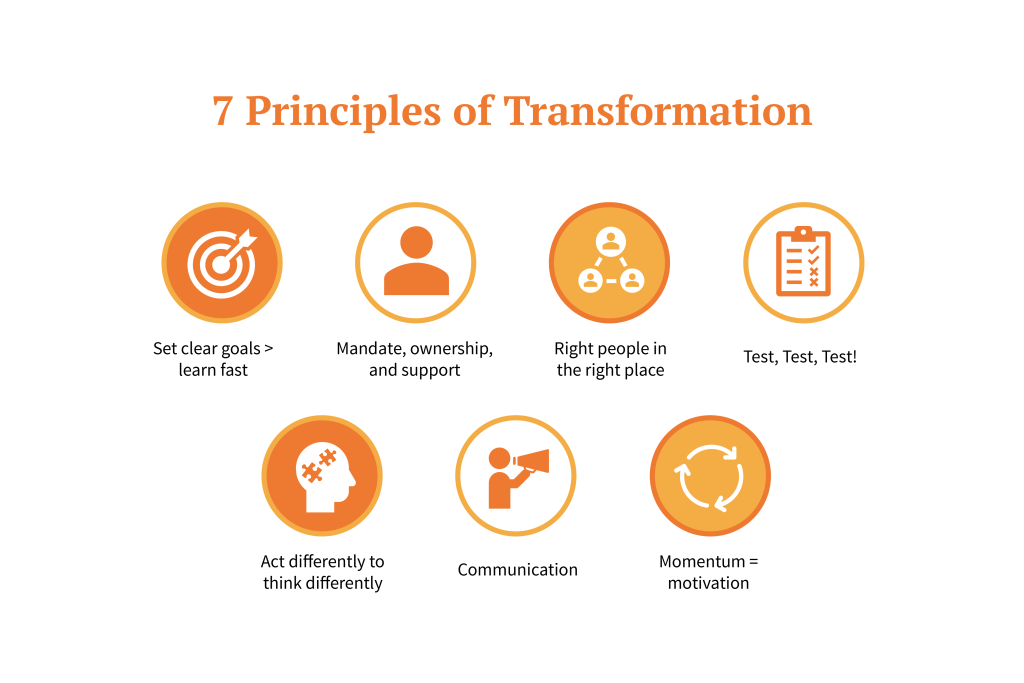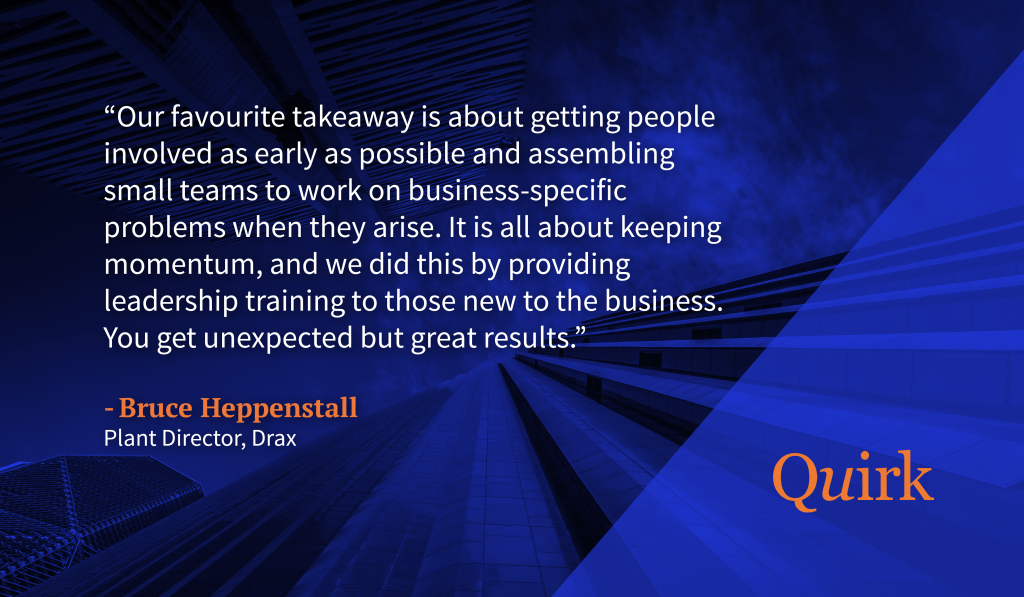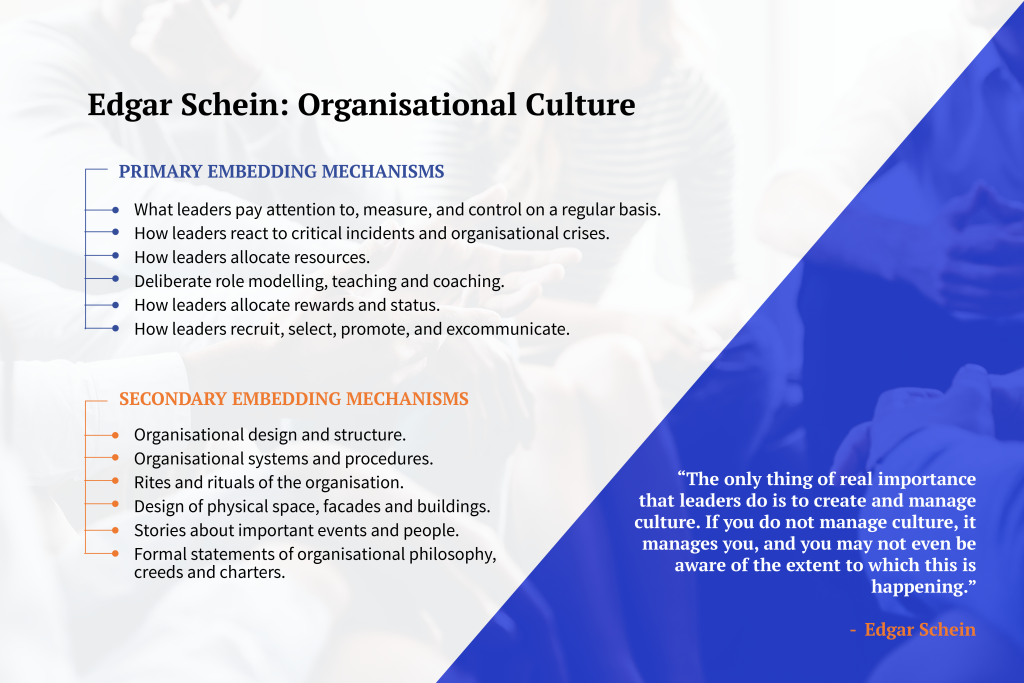Organisations need to constantly review and change what they do because without change, we become stagnant, and our companies die. Organisational change might include modifying one or more aspects of a company’s operations. These aspects may include its culture, organisational structure, infrastructure, systems, and processes. Implementing such changes often involves the participation of a large proportion of the organisation to ensure their success. Unsurprisingly, 70% of change initiatives fail for a host of reasons. Leaders must involve as many people as possible to gain their genuine commitment to change. This article presents Quirk’s seven principles for effectively leading organisational change.

1. Set Clear Goals for Organisational Change
One critical aspect of successful change is setting clear goals. Leaders are crucial in defining these goals, providing direction, purpose, and a roadmap for the entire organisation. Your goals should not only set out what you plan to achieve, but you should share why. Change can be daunting for individuals, so until they come to terms with ‘the why’, you will always struggle to get them onside with change. By providing a compelling answer to “the why,” leaders can help individuals come to terms with the need for change, increasing their willingness to actively participate and support the transformation journey. Moreover, effective goal setting goes beyond simply stating the desired outcomes. It involves creating goals that are specific, measurable, attainable, relevant, and time-bound (SMART).
2. Give Ownership of the Change Mandate
Successful business leaders know that execution and ownership are key components of any transformation. As Jamie Dimon, CEO of JPMorgan Chase, once said, “I’d rather have a first-rate execution and a second-rate strategy any time than a brilliant idea and mediocre management.”
Involving as many people as possible in the process is important to execute change successfully. The change can be disrupted without a sense of ownership – and ultimately fail as a result.
One example of successful change execution is captured in the work Quirk did with Drax. Almost 25% of the Drax organisation was involved in the change initiative, with 84 employees working together to design and implement the transformation. As the saying goes, “Tell me and I’ll forget; show me, and I may understand; involve me, and I will remember and apply.” Leaders need to be prepared for a potentially slower process, knowing that involving teams in decision-making will ultimately lead to more successful implementation and buy-in. So, if you’re looking to execute change within your organisation, remember that ownership and execution go hand-in-hand. Involve your teams, affirm their ideas, and watch your transformation gain traction.

3. Compose Teams with the Right People
It’s crucial to have the right individuals in each team. Drax adopted a careful approach by ensuring their teams consisted of union representatives, apprentices, mid-tier management, and representatives from different departments. For instance, when forming teams to work on specific areas, the individuals come from different functions, providing mixed expertise. This is one of the strengths of our Q-Suito model, as it brings new perspectives and innovations. If you keep teams comprised solely of people who will execute the work, you never get fresh thinking. Often, people wonder what to do with individuals who are challenging to work with and resist progress. In such cases, we recommended placing them on the team. Exposure to the team’s dynamics may influence their mindset positively, or they could act as a critical friend by questioning decisions they believe are not right. Hence, selecting the right people is vital, ensuring that the team doesn’t consist solely of people who agree with everything.
4. Use Gaming to Empower Teams
Gaming can be a valuable tool for teams to challenge and enhance ideas during change initiatives in companies. Through gamification, team members can engage in interactive and collaborative experiences that encourage creative thinking and problem-solving.
By simulating real-world scenarios and allowing participants to make decisions and face consequences within a game environment, teams can explore different perspectives and test the viability of any transformative change in a risk-free setting. This enables teams to identify potential flaws, refine their strategies, and develop solutions. Furthermore, gaming fosters teamwork, and communication among team members, enhancing their ability to collaborate effectively and collectively drive change within the organisation.
5. Embed New Behaviours for Lasting Change
Driving transformation and achieving meaningful change within an organisation is undoubtedly challenging, requiring more than surface-level adjustments. Introducing new job titles, uniforms, or values may provide a temporary visual change, but going beyond these superficial modifications is essential. According to Edgar Schein, the renowned American organisational psychologist, primary embedding mechanisms play a vital role in ensuring the success of change efforts.

The primary embedding mechanisms stress the importance of consistently practising new behaviours and working methods, even in the face of challenges. More is needed for individuals to understand the desired changes; leaders must actively demonstrate these behaviours daily. Implementing these mechanisms requires leaders to find a balance between consistency and adaptability. Leaders must be willing to adjust their approach if things are to progress as desired. By inspiring and influencing individuals to embrace new behaviours, leaders can pave the way for successful transformation and create a culture of continuous improvement.
6. Drive Effective Communication for Organisational Change
Communication plays a crucial role in driving successful organisational change. Edgar Schein identified it as a secondary embedding mechanism that makes the change initiative stick. Often, organisations mistakenly believe they communicate well about the change. But the message needs to land with all the intended recipients. Avoid investing significant time crafting and disseminating a single communication without considering that different stakeholders need tailored messages.
To ensure effective communication, consider the message, the communication channel, and the target audience. When communicating, one should ask themselves:
· What do I want this specific group of people to know?
· How do I want them to feel?
· What actions do I want them to take?
Being open to feedback is crucial in the communication process. Drax, for example, excelled at encouraging feedback during their change initiative. The second principle of Quirk’s Q-Suito model emphasises owning the change mandate. Teams often return to a steering group composed of senior managers to share feedback and insights. This two-way communication approach fosters better change outcomes by allowing organisations to adapt and refine their messaging based on the valuable input received.
7. Maintain Momentum during a Change Initiative
To maintain momentum during a change initiative, leaders should balance progress.. While addressing the headline issues is essential, focusing solely on them can lead to frustration, decreased motivation, and slow progress. Leaders should identify one or two significant elements to address while simultaneously working on more minor, manageable aspects of the change. This approach creates a sense of momentum as more minor changes are accomplished, keeping the overall change process moving forward.
Leaders should emphasise the importance of making progress, even in small increments. Instead of overwhelming employees with a massive change all at once, breaking it down into smaller, achievable tasks helps maintain motivation and emotional connection. Leaders approach the change initiative as eating an elephant—one bite at a time—ensuring continuous and tangible progress.
As part of maintaining momentum, leaders should help people understand what is NOT going to change. This reduces the sense of dread and fear by reiterating that a lot will remain the same. By adopting these strategies, leaders can maintain momentum during a change initiative. Balancing the scale of change and focusing on incremental progress help keep employees motivated, engaged, and connected to the change process.
Those are the Quirk principles of organisational change, learnt over time. To tell us about your ongoing or planned change initiatives, email us at [email protected]. We’d be delighted to hear from you.



